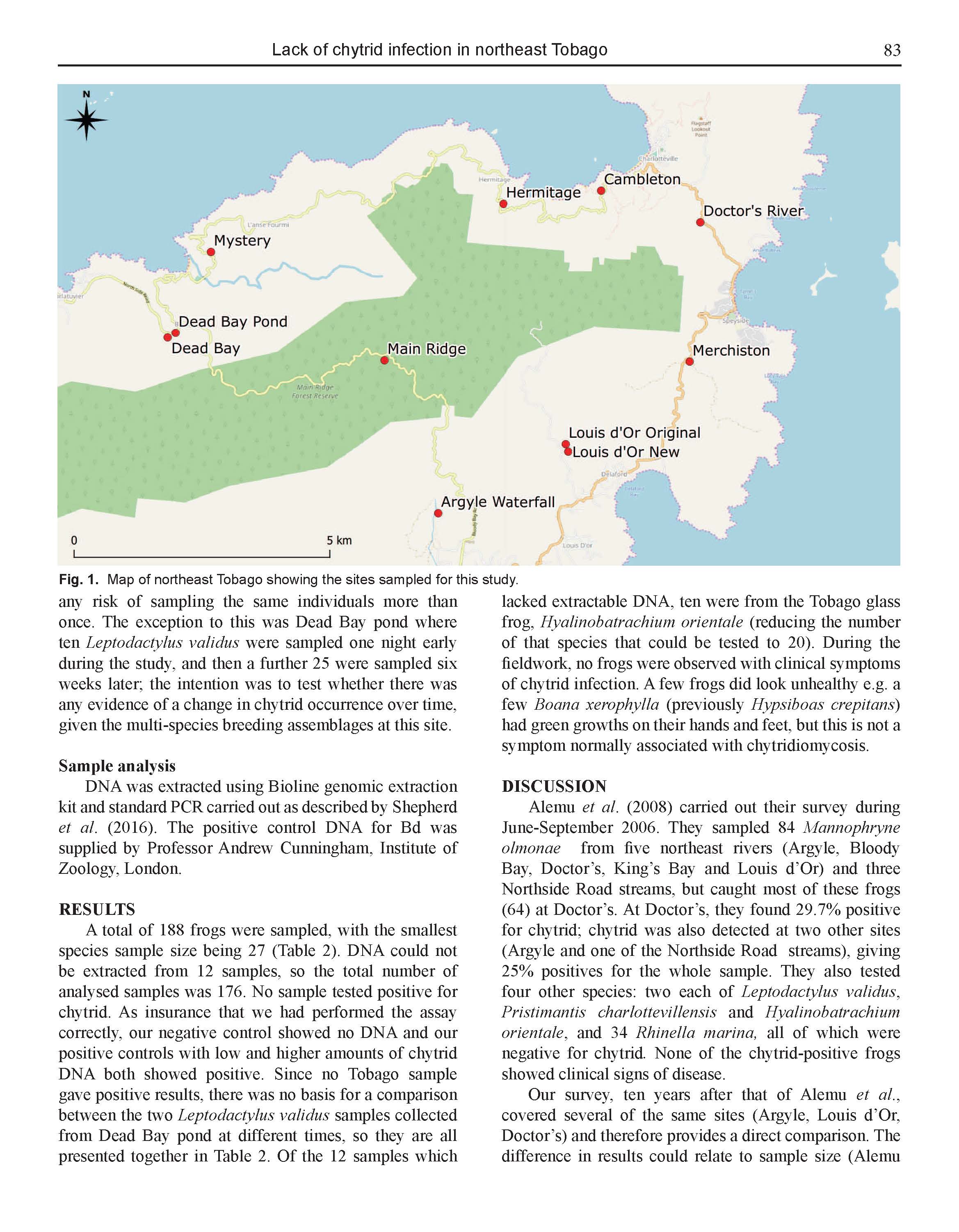Apparent lack of chytrid infection in northeast Tobago’s frogs
Abstract
Six species of Tobago frogs (including the stream frog (Mannophryne olmonae) from 11 sites across the northeast of the island were tested in 2016 for the presence of the pathogenic chytrid fungus Batrachochytrium dendrobatidis. No chytrid was detected in any of the 176 samples (20-39 frogs per species). These results contrast with a 2006 survey which found chytrid in 25% of the M. olmonae individuals sampled, though none in smaller samples of four other species. Together with similar results from Trinidad, our findings indicate that the infection may have died out or be at a very low level in Trinidad and Tobago. However, there is a need to sample from the south of Tobago and from two threatened species not yet assessed.

Downloads
Published
2018-12-31
Issue
Section
Research Papers
